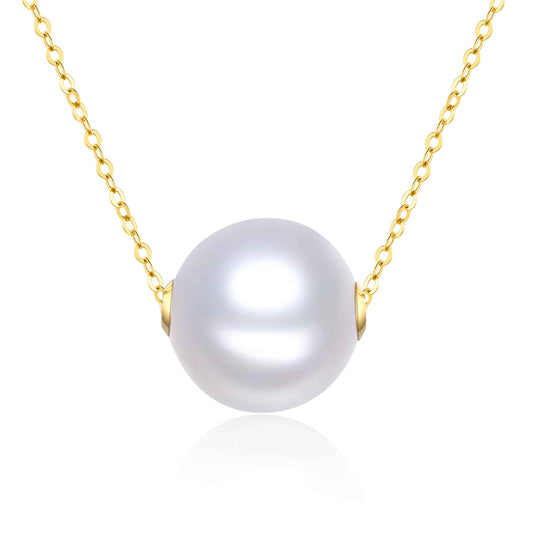
Emily Dickinson: The Paradoxical Pearl
Share
Her Poems Embraced Turmoil and Found Beauty within
Humans tend to think that if we want to accomplish something, we need to be forceful and sure of ourselves. We see emotional struggle and hardship as obstacles to our dreams. But oysters show us there is another way to look at life. With quiet determination and hard work, they work at the problem of a grain of sand or implanted bead in the safety of their shell. The outcome of all that hardship, without the oyster really knowing if it’s going to work, is a shimmering pearl. We believe that people are like oysters, and that hard times, mistakes, or even just a state of uncertainty, is sometimes the catalyst that channels our energy in such a way that we leave our own pearlescent legacy, showing us that we are capable of so much more than we believe we are. In honor of this unique human quality, we have started a series to look at some of the women who have lived their lives like pearls. We call it the Living like a Pearl series and you can find the other stories here.
_________
It seems the American poet Emily Dickinson had the same approach as oysters, and in more than one way. Dickinson is known as a somewhat mysterious poet. Born in the town of Amherst in Massachusetts in 1830, she preferred the safety of her family home and was known as an eccentric rather than a poet. Though she went to school and had good relationships with her teachers, she avoided visitors and, like her sister Lavinia, never married. Most of her social contact was through letter writing. She spent hours in her room. The furthest she went from the home was on the grounds belonging to her father – a prominent lawyer in town – for walks in the gardens. She always wore white. And in her seclusion, she worked away at personal struggles – stringing them out in lines of poetry as, perhaps, an oyster layers its problem with a bit of nacre over and over, until a pearl emerges.
And a pearl did indeed emerge. Though she was never famous in her lifetime (she only published about ten poems while alive, most without her consent), Dickinson is considered one of the leading 19th century American poets. The true extent of her prolific writing only became apparent after her death, when her siblings discovered a stash of neatly bound volumes of poems in her room, carefully rewritten and hand-sewn together at the folds. When counted, the volumes contained more than 800 poems, her papers in total held almost 1800.
Much like the process of creating a pearl, it seems that paradoxically, it was times of distress that sent her into a higher creative drive. Dickinson wrote from a young age. But it was in the summer of 1858, during a time of tension due to various events in and outside the home, that she started putting together her hand-written and hand-bound volumes of poetry in all earnest. She neatly rewrote poems she wanted to preserve and, one imagines, carefully selected which ones should be included and which not. She wrote some of her most beautiful prose then, but also after her mother died, both in letters and poems, and once more when another friend died a year after her mother. From her many letters and poems, one gets the sense that she often went through times of emotional suffering and felt rejected or misunderstood by others. Yet she was always writing.
It’s not just life events and their correlation to times of writing that shows how hardship pushed her literary career further. Dickinson herself believed that it is in the depth of hardship that we find beauty, and her poems reflect this.
One such poem is ‘The zeroes taught us phosphorus’. This first line is also the name of the poem – she often neglected to name her poems. She uses the metaphor of fire, implying that ‘the zeroes’ – when the temperature drops to zero – makes us appreciate the warmth of fire. ‘Phosphorus’ is the word that signifies fire: at the time, matches were made using phosphorus. There are also lines like ‘To comprehend a nectar / Requires a sorest need’ from the poem Success is Counted Sweetest – and many more examples.
Dickinson died at age 55 in her family home from what was believed to be a stroke, but could also have been hypertension. Her story of hard work under self-imposed seclusion is a pearl in itself, but her legacy of shining, brilliant poems, even more so.



